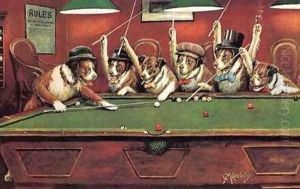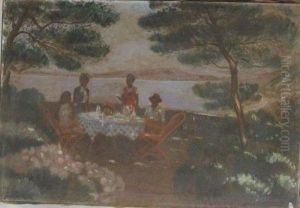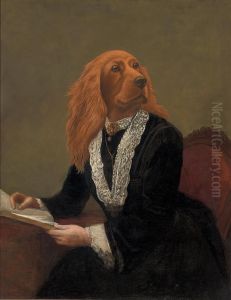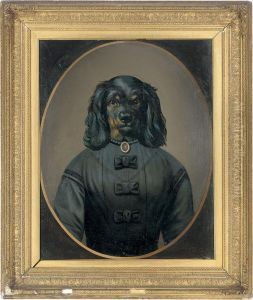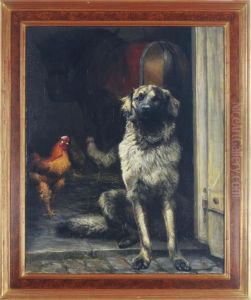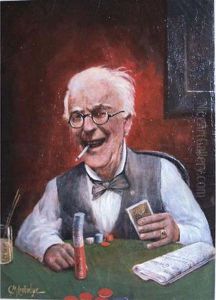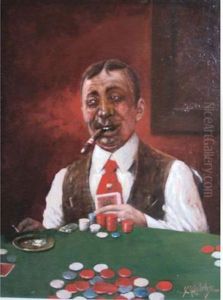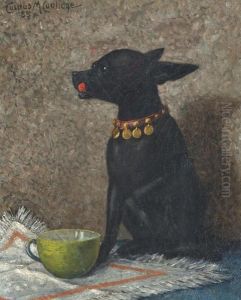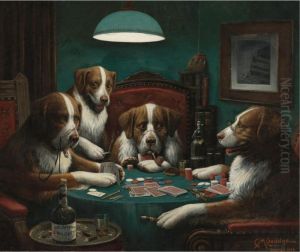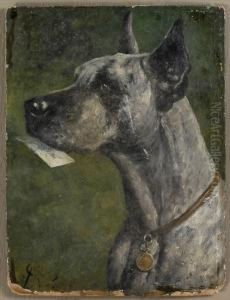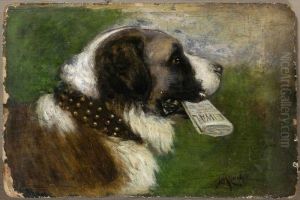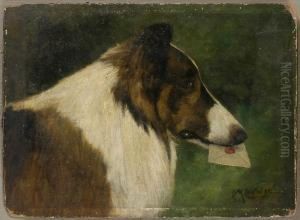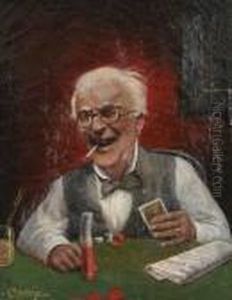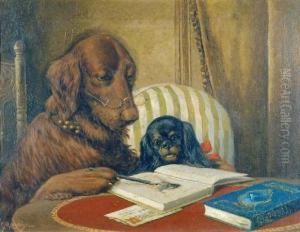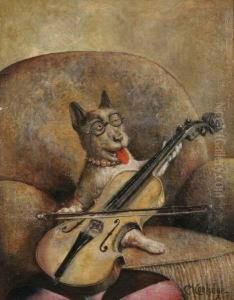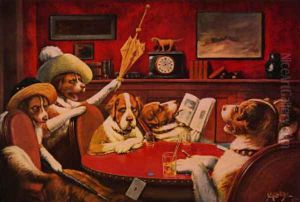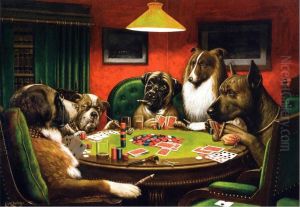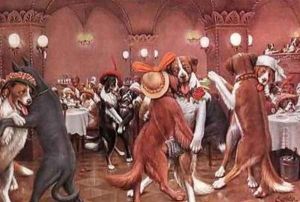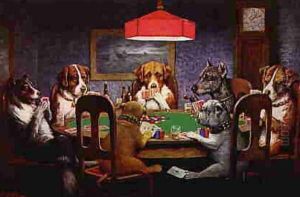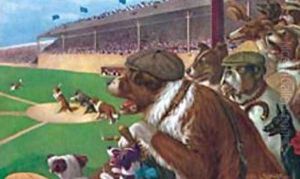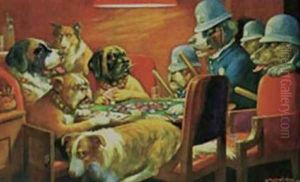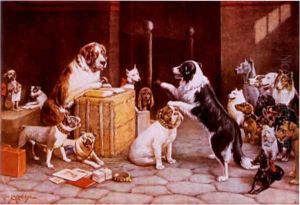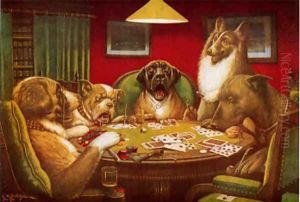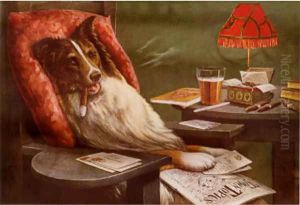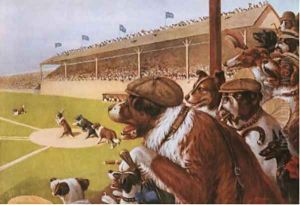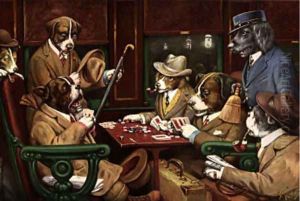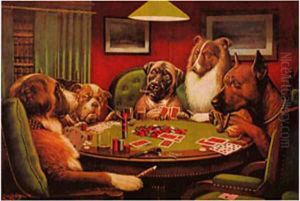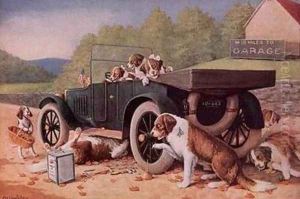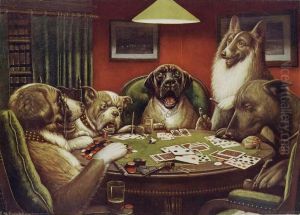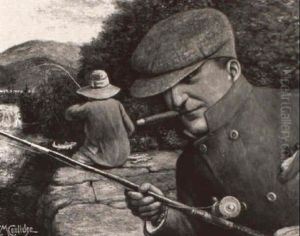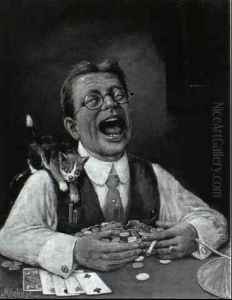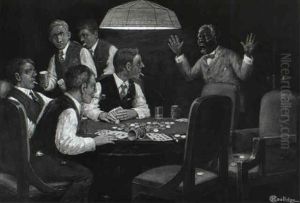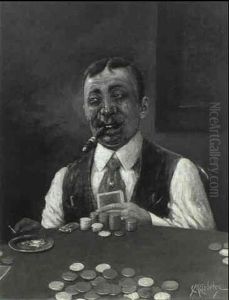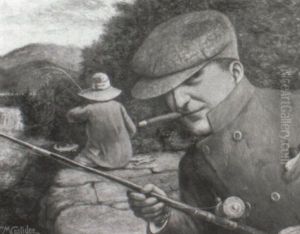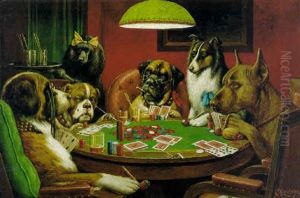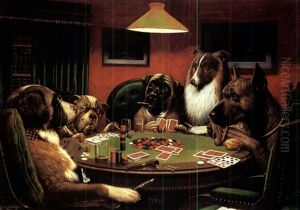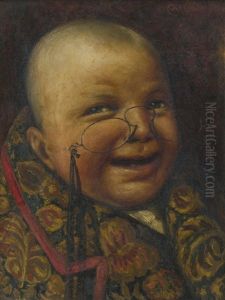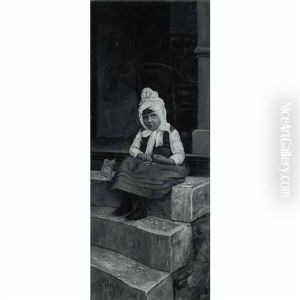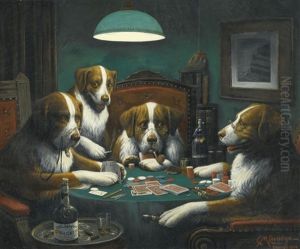Cassius Marcellus Coolidge Paintings
Cassius Marcellus Coolidge, known for his iconic series of paintings Dogs Playing Poker, was an American artist born on September 18, 1844, in Antwerp, New York. Despite being best remembered for these particular works, Coolidge had a diverse career that included work as a druggist, sign painter, inventor, banker, and newspaper publisher.
Coolidge's artistic journey wasn't linear. He started by painting street signs and creating cartoons for newspapers. His sense of humor was evident in his cartoons and would later become a signature element of his most famous paintings. In the 1890s, he began to produce comic foregrounds for amusement parks. These were large cutout boards where tourists could stick their heads through holes to have their photographs taken as comical characters.
It wasn't until 1903 that Coolidge received a commission from Brown & Bigelow, a Minnesota-based advertising firm, to create a series of calendar paintings. Among these works were sixteen oil paintings of anthropomorphic dogs engaged in human activities, including the now-famous Dogs Playing Poker series. The paintings were originally intended to advertise cigars, but they quickly became popular in their own right and are now considered iconic examples of American kitsch art.
Coolidge's depiction of poker-playing dogs captured the American imagination and has been widely reproduced and parodied in various media ever since. Beyond these works, Coolidge also painted other subjects, including genre scenes, landscapes, and still lifes, although none achieved the fame of his canine series.
In addition to his artistic endeavors, Cassius Marcellus Coolidge was also an inventor, holding patents for a number of devices, including a life-sized carnival figure that talked and gestured, a type of paper that could withstand water and washing, and an early version of neon lighting.
Coolidge continued to work and paint throughout his life. He passed away on January 13, 1934, in his 90s, leaving behind a legacy that, while often seen as humorous and not taken seriously by art critics, has ensured his lasting popularity and a unique place in American art history.
